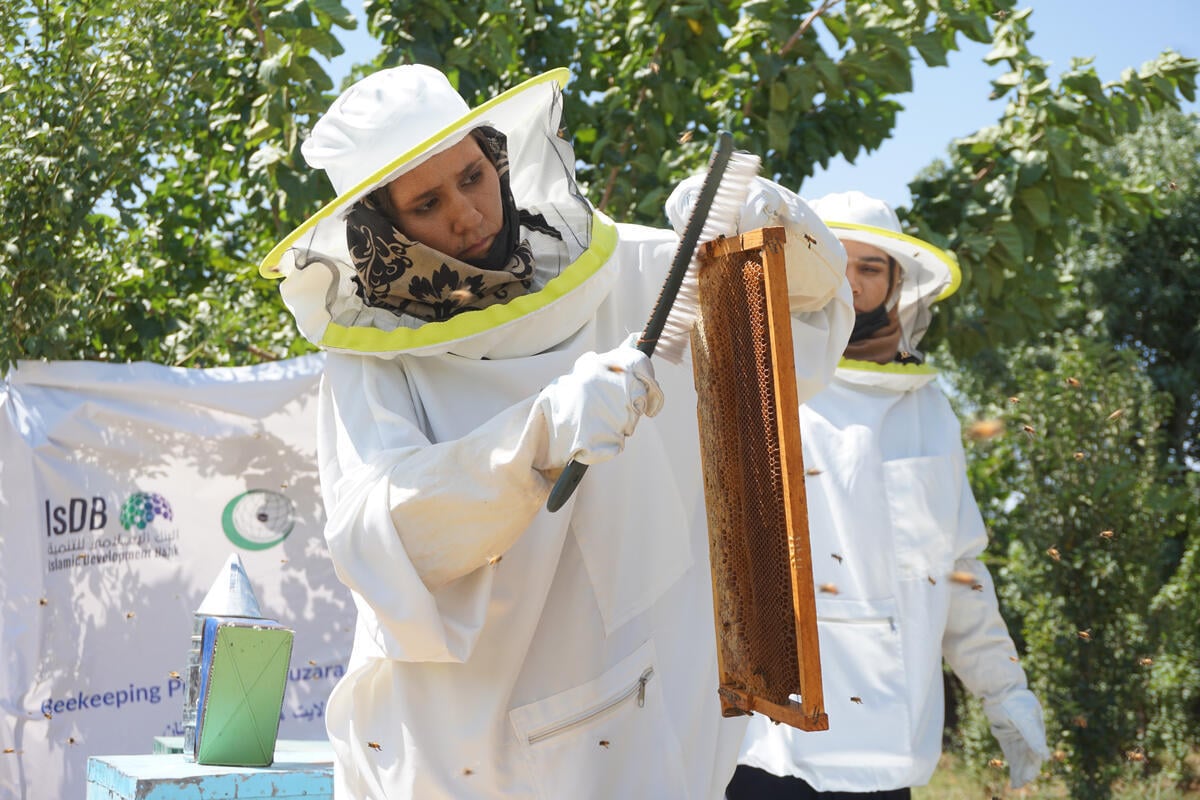Some 60,000 return to Mogadishu this year amid relative lull in fighting
Some 60,000 return to Mogadishu this year amid relative lull in fighting

NAIROBI, Kenya, April 14 (UNHCR) - Some 60,000 civilians have returned to Mogadishu since the start of 2009 amid a relative lull in fighting in the Somali capital in the first three months of the year. Fresh conflict in late March between an armed opposition group and government forces displaced some 1,200 people.
Most of those returning to Mogadishu this year have been coming from settlements for internally displaced people in the Lower and Middle Shabelle regions in south-central Somalia, and Hiraan, Galgaduud and Mudug regions in central Somalia. They are returning mainly to the districts of Yaaqshiid, Wardhiigleey, Heliwaa and Hawl Wadaag in north-east Mogadishu.
UNHCR has also reports of 2,200 returnees from Kenya, 300 from Yemen and 20 from Ethiopia, as well as a mixed group of some 900 refugees and forced returnees from Saudi Arabia.
"I hope these returns will be sustainable," said Nairobi-based UNHCR Representative to Somalia Guillermo Bettocchi, who visited Mogadishu last Wednesday as part of an inter-agency mission. "The situation in Mogadishu is still very unstable and basic services are not in place yet. We are going to do our best to help the Somali people in this difficult moment," he added.
Despite the fact that returns are a positive sign and that sustainable return of refugees and internally displaced people is the preferred solution, UNHCR is not yet encouraging returns to Mogadishu amid the volatile security situation and lack of basic services.
The returnees are facing multiple problems, including the lack of adequate shelter. Many houses in the neighbourhoods of return were destroyed in the heavy fighting that took place in Mogadishu in the last two years.
UNHCR is leading an inter-agency assessment of the situation in Mogadishu, which will guide the assistance and protection policy of the humanitarian community with regards to the returnee communities. The agency also hopes to re-establish its presence in Mogadishu as the security situation allows. All foreign humanitarian workers were evacuated in mid-2008 following killings and kidnapping of UN officials, including the abduction of the UNHCR head of office.
UNHCR's Bettocchi and representatives of other humanitarian agencies met Somali officials during their mission to Mogadishu last week and discussed the next steps to take in support of returnees and the displaced.
"I am very pleased that the new government has made the support to the returnees a priority. In particular, it's very encouraging to hear that they intend to respect the right of the people to choose where to live, not forcing anybody to move against their will," Bettocchi said in Nairobi on Tuesday.
Despite the positive sign of returns to Mogadishu, the insecurity in some regions of the country, combined with drought and the lack of livelihoods among rural and urban people, continues to push thousands of Somalis to flee to neighbouring countries.
More than 24,000 Somali refugees have fled to Kenya since January and some 3,000 entered Ethiopia, while another 10,000 people left their homes during the same period because of the acute drought ravaging many parts of the country.
Some 8,000 of the drought-affected population were displaced in Kismayo and Badhaade districts in the Lower Juba region, while more than 2,000 have moved from rural to urban areas in Galgaduud in central Somalia. The biggest problem is the heavy loss of livestock suffered by the predominantly pastoralist communities in the worst drought in 30 years.
UNHCR assists more than 460,000 Somali refugees in nearby countries, including Kenya (277,000), Yemen (126,000), Ethiopia (36,000), Djibouti (8,000), and Uganda (7,000). It also coordinates protection and shelter activities for the 1.3 million internally displaced in Somalia.
By Roberta Russo in Nairobi, Kenya








